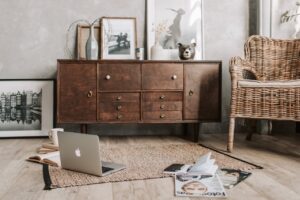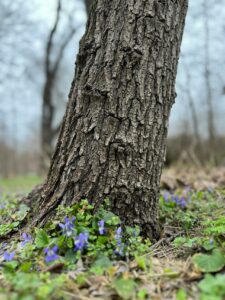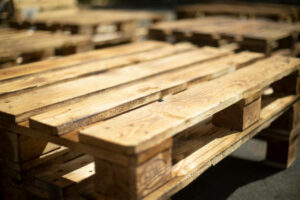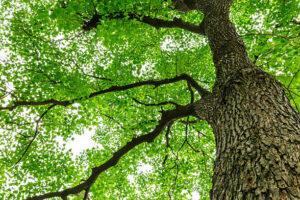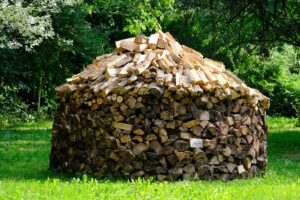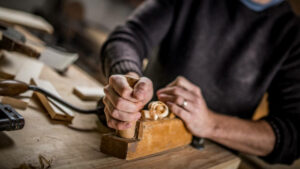Several varieties of wood can be used to make furniture, and the choice of wood will typically have an impact on the piece’s cost as well as its resilience to damage, durability, and appearance. Although it is typically only used for indoor furniture, spruce wood is a wood that is frequently utilized in furniture production. Spruce wood is prone to rot, cracking, splitting, and other water damage, just like other softwoods; therefore, it’s best to avoid using it for furniture that will be used outside or in moist areas. However indoors, spruce for furniture is durable with high strength.
Is Spruce a Hardwood Or Softwood?
Spruce is a common wood used for a variety of woodworking tasks, such as furniture construction; it has a straight grain and an even texture that ranges from cream to white to yellow. It is frequently employed in energy production as well as the building of beams, joists, crates, and foundations.
No, spruce isn’t hardwood. Spruce is a softwood. Spruce wood has a hardness rating of 510 lbf (2,268 N), which is lower than that of most other types of wood. It comes from a coniferous tree. Despite being a softwood, spruce has an excellent strength-to-weight ratio.
However, there is still a great deal to learn about the characteristics and hardness of spruce wood.
Types of Spruce Wood Species

Spruce is softer than most softwoods and hardwoods combined. Based on the Janka scale, spruce has a hardness value of 510 lbf (2,268 N), which is lower than many other wood species. These are distinct species of spruce with almost identical characteristics and hardness levels.
- Sitka Spruce, rated at 2,268 N (510 lbf) in hardness. The lumber with the bear claw motif glues and polishes well. These spruces are used to make wind turbine blades, crates, boxes, millwork, boat masts, airplane spars, musical instruments, and sound equipment.
- White spruce with a 2,135 N hardness rating of 480 lbf, this creamy variety works well for millwork, crates, and construction lumber because it is pliable and lightweight.
- Black spruce with 520 lbf (2,313 N) of hardness. The creamy spruce is lightweight and has a minor resistance to deterioration. Usually used for millwork, paper pulp, construction lumber, and containers, it is affordable.
- Engelmann Spruce, rated at 390 lbf (1,734 N) in hardness.
- Red spruce with a 490 lbf (2,135 N) hardness rating. Red spruce from nearby sources are reasonably priced and used for creating round timber, Christmas trees, musical instruments, containers, and construction timbers.
- Spruce-pine-fir lumber– The lumber species referred to as spruce-pine-fir (SPF) is a blend of lodgepole pine, subalpine fir, and Engelmann spruce. This type of lumber is widely available in North America and can be utilized for a wide range of purposes, including house framing construction for residential, commercial, industrial, and agricultural purposes.
How Can You Identify Spruce Wood?
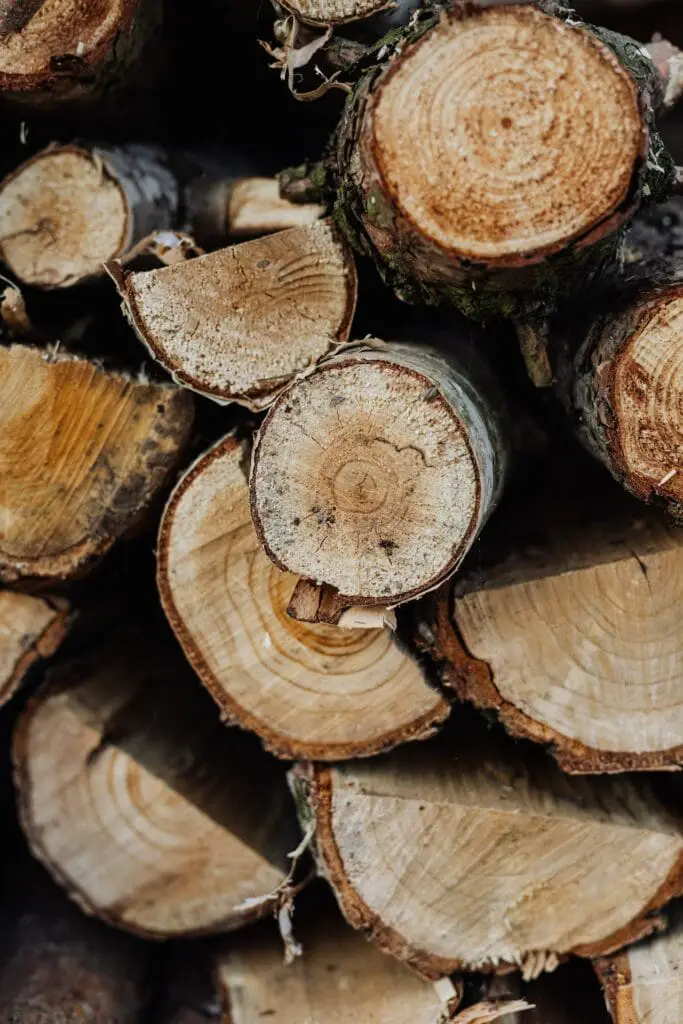
Like any other wood, spruce wood can be identified with a sharp eye for detail and an understanding of the qualities that set it apart. These characteristics can be used to recognize spruce wood.
The Color and Texture
Spruce usually has a light color with a tint of red or yellow, though this might vary slightly depending on the kind of spruce. The heartwood of Norway spruce, for example, is brown to reddish-brown and is encircled by white sapwood. The heartwood of the Engelmann spruce, however, is yellow to white.
Additionally, spruce wood is distinguished by its smooth feel and fine, straight grain. Because of these characteristics, spruce seems uniform, which can be a useful indicator when attempting to identify this kind of wood.
Weight and Hardness
Spruce is a softwood with a low degree of hardness and is lightweight. In context, spruce is ranked at the lower end of the Janka hardness scale, which indicates how resistant wood is to dents and wear. For example, the Janka rating of Engelmann spruce is 390, while that of Norway spruce is 380. In contrast, popular hardwood red oak has a Janka grade of 1,290.
The Growth Rings
Growth rings are one distinctive characteristic of spruce wood that might aid in its identification. Because of their closed growth rings, spruce trees are a good choice for tonewood in musical instruments. For experienced woodworkers or anyone involved in the making of musical instruments, this may be a more sophisticated distinguishing feature, but it’s a telling sign.
Smell of Wood
Spruce wood is frequently characterized as having a crisp, fresh scent that is reminiscent of the forest after a rainstorm. Skilled woodworkers may recognize spruce wood by its distinct scent.
Usage of Spruce Lumber
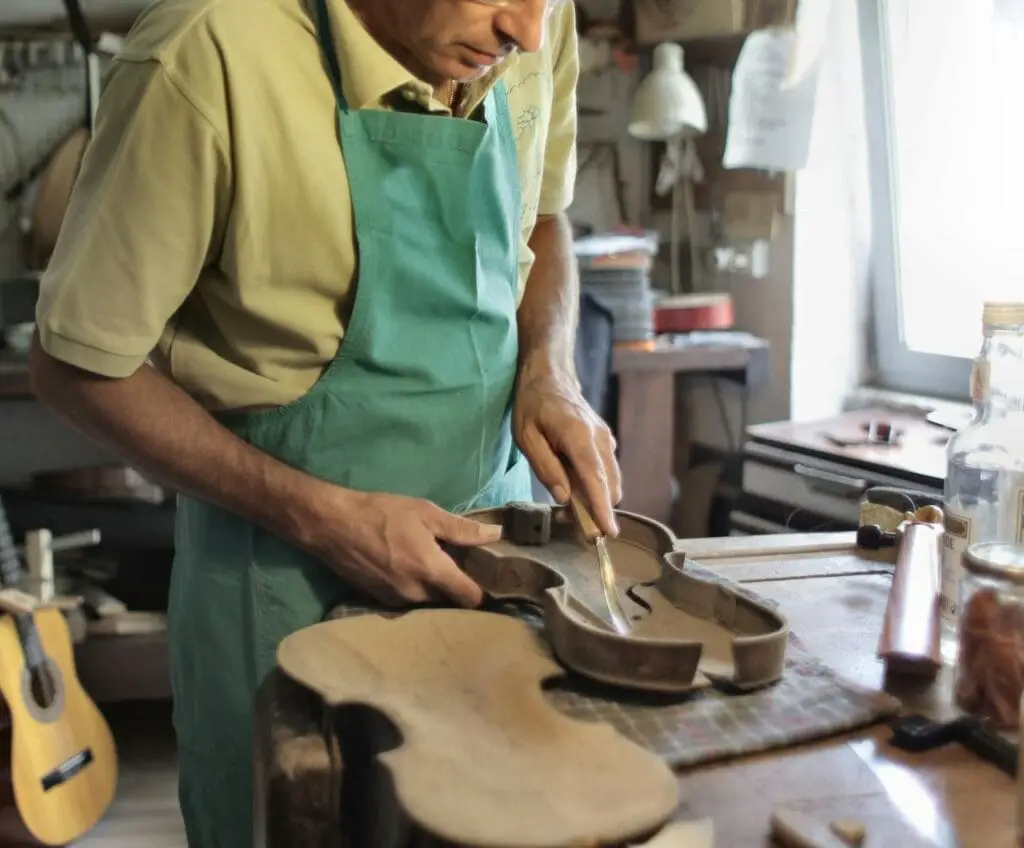
Spruce is a good wood for framing and light construction. It is perfect for siding and many other lumber applications because of its relative endurance, such as:
- Shipping containers
- Musical instruments
- Airplanes
- Boats
- Tools, oars, ladders, handles
Spruce for Furniture Making
Spruce wood is used to make dressers, bureaux, cabinets, chairs, tables, and even bed frames. Since it is easy to work with and can be less expensive than many other varieties of wood, there are very few furniture types that cannot be manufactured from this sort of wood.
However, spruce wood needs to be kiln-dried before being used to make furniture to prevent warping, splitting, and breaking over time. After building the piece of furniture, the builder would typically seal the wood with a chemical to help shield it from common sorts of damage.
Spruce wood is also useful for veneers, runners, toe kicks, and fences. Since veneers are typically bonded or somehow secured to another structure, these accent pieces or pieces of furniture don’t typically get exposed to as much moisture, so the spruce will be significantly less likely to distort or break. If the wood warps with time, fences are frequently straightenable, though the procedure might be challenging.
Spruce wood can also be used to create doors, but again, it’s best to use this wood just for doors that won’t be subjected to a lot of moisture. Spruce can be used to make bedroom doors, for example; however, it’s probably not a good idea to use spruce for front doors because of the possible warp and rot.
Final Words
While spruce wood is a gorgeous option for flooring, homeowners should exercise caution when using it because humid weather can negatively damage the wood, causing warping and uneven floor surfaces. It is never a good idea to lay spruce flooring straight onto moist surfaces like concrete or dirt; to assist in preventing damage, some kind of waterproof barrier should be placed between the softwood and these damp materials.

